February 9, 2004
LifeWay Adds 'Passion' to
Online Resources- Sara Horn, Baptist Press
"The Passion of The Christ," is receiving high praise weeks before its
release Feb. 25. Christian leaders who have previewed the film call it
"one of the greatest evangelistic tools of the century" as local churches
look for ways to use the film for outreach. LifeWay Christian Resources
has launched a new website at lifeway.com to help people and churches
communicate the salvation message of the movie. Free content from LifeWay
resources emphasize the power of Jesus' death, burial and resurrection,
and the offer of everlasting life through a personal relationship with
Christ. Visitors to lifeway.com also can order movie ticket vouchers,
as well as free fan kits that include posters and other promotional materials
churches may distribute in their communities. Sound clips and other music
resources that coordinate with sermon outlines will be available in coming
weeks. The LifeWay website's "Behind the Scenes" section is specifically
designed for non-Christians who seek more information about Christ. It
provides answers to questions about the movie, as well as articles and
devotionals that explain the crucifixion and resurrection. A link titled
"Know Him" walks readers through the steps to becoming a Christian. LifeWay
President James T. Draper Jr. said the film is a must-see for anyone seeking
to understand how an event 2,000 years ago continues to impact lives today.
A critique of the Da Vinci Code worth reading. Here's an apologetics site with a good selection of links to articles as well.
February 9, 2004
The question of whether Bible teachers should utilize visualizations in
their teaching is a non sequitur, IMHO. The modern concept that "words
are enough" has been an atttitude that has been rooted in verbalism
in the evangelical church since the days of the iconoclasts.
|
Most competent educators know the value of visuals. The shortcomings of using words alone to paint images in the mind of the audience is the basis of some of the most serious problems a teacher can face. Let me say at the outset that I believe in the verbal, plenary inspiration of scripture and that the Word of God is inerrant. I also believe that the Word itself should be preeminant in the teaching of the Word. It is God breathed and supernatural, having the power to change hearts, to divide between marrow and bone. (Do you see that this metaphor/ figure of speech itself is a word picture that may need fleshing out for some folks?) |
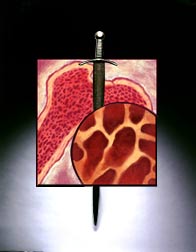 |
In presenting information we often make the assumption that the hearer percieives the information in the same way and with the same meaning that we do. This is especially true in regard to verbal information in a postmodern age. I want to be careful with what I am about to say. Words do not have meanings per se- but they do have power to create meaning in the mind of the hearer. They are abstract representations of concrete realities.
 |
Humans give meanings to the symbols we know as words and because each of us has had an unique combination of experiences and education, these meanings may be invested with highly personal attributes. Sometimes meaning is lost in translation. It is important for the words on the page to come alive in the hearts and minds of the hearer who gives the ears to hear. It is also paramount that the original meaning of the author must be the standard of interpretation. We are living in a time when this is deemed impossible by many, but the Bible itself does not adhere to this premise. |
We often see our words fail to produce the desired change, because they are not made alive by the Spirit of Truth who speaks to human hearts through a myriad of ways to illumine the mind. God's word never returns void.
Some communicators focus on the fact that Jesus used metaphors in his parabolic teaching to the masses and to the disciples. I would add that a panoply of OTHER methodologies are used by Biblical writers under the inspoiration of the Spirit as well- letter writing, rhetoric and argumentation by Paul, poetry by the prophets, object lessons, preaching, hymns, historical narrative, statistics, visions, signs and wonders, and typological imagery. But the primary thing that ties these to gether are words.
If we place too much emphasis on words alone we may become guilty of practicing what Webster defines as "verbalism" or "an empty form of words". Words are easily produces, reproduces, stored and transferred but they can also be overused. Words which are filled with meaning for one person may be devoid of meaning for another. As a sage once said, "A person must carry meaning to a word before he can carry meaning from that word."
The ease of reproduction of the printed word that was facilitated by the printing press has seen reproduction of images take a backseat as more costly and less easily reproduced. The history of the book attests to that. Until the advent of photographic processes, images were handmade, so to speak. Engravings of images for print were the product of skilled craftsmen.
| Biblical evidences for visual education |
 |
Proverbs 20:12 The hearing ear and the seeing eye,The LORD has made both of them.
 |
 |
To balance this and to give context for the use of visuals it must also be quoted:"As it is written: 'No eye has seen, no ear has heard, no mind has conceived what God has prepared for those who love him.'" -- 1 Corinthians 2:9
Scripture is replete with examples of visual examples used to teach spiritual truth. I will cite a few which will suffice to make this point.
The use of visuals in education begins with our Creator...
|
click image for larger view |
God has communicated much through natural revelation. The sense of sight is a prime channel for man’s apprehension of the reality of God. Psalm 19:1 The heavens are telling of the glory of God; And their expanse is declaring the work of His hands. 2 Day to day pours forth speech, And night to night reveals knowledge. 3 There is no speech, nor are there words; Their voice is not heard. |
God's sign of promise to Noah
Genesis 9: 13I set My bow in the cloud, and it shall be for a sign of a covenant between Me and the earth.
14"It shall come about, when I bring a cloud over the earth, that the bow will be seen in the cloud,
15and I will remember My covenant, which is between Me and you and every living creature of all flesh; and never again shall the water become a flood to destroy all flesh.
16"When the bow is in the cloud, then I will look upon it, to remember the everlasting covenant between God and every living creature of all flesh that is on the earth."
 |
 |
The Stars as an image to Abraham elicited faith
Genesis 15: 5And He took him outside and said, "Now look toward the heavens, and count the stars, if you are able to count them." And He said to him, " So shall your descendants be."
6 Then he believed in the LORD; and He reckoned it to him as righteousness.
The Tabernacle as a visual reminder to Israel
Hebrews 8
2a minister in the sanctuary and in the true tabernacle, which the Lord pitched, not man.
5who serve a copy and shadow of the heavenly things, just as Moses was warned by God when he was about to erect the tabernacle; for, "SEE," He says, "THAT YOU MAKE all things ACCORDING TO THE PATTERN WHICH WAS SHOWN YOU ON THE MOUNTAIN."
The Blood of the Passover lamb as a visual reminder:
Exodus 12:17 The blood shall be a sign for you on the houses where you live; and when I see the blood I will pass over you, and no plague will befall you to destroy you when I strike the land of Egypt.
 |
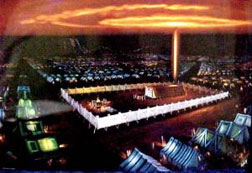 |
Joshua's Stones of Remembrance
 |
20 And Joshua set up at Gilgal the twelve stones they had taken out of the Jordan. 21 He said to the Israelites, "In the future when your descendants ask their fathers, 'What do these stones mean?' 22 tell them, 'Israel crossed the Jordan on dry ground.' |
23 For the LORD your God dried up the Jordan before you until you had crossed over. The LORD your God did to the Jordan just what he had done to the Red Sea when he dried it up before us until we had crossed over. 24 He did this so that all the peoples of the earth might know that the hand of the LORD is powerful and so that you might always fear the LORD your God."
Jesus repeatedly used images to convey spiritual object lessons:
Birds Matthew 6:26
"Look at the birds of the air, that they do not sow, nor reap nor gather into barns, and yet your heavenly Father feeds them. Are you not worth much more than they?
 |
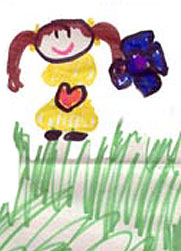 |
A Child
Mark 9:36And he took a child, and set him in the midst of them: and when he had taken him in his arms, he said unto them,
37Whosoever shall receive one of such children in my name, receiveth me: and whosoever shall receive me, receiveth not me, but him that sent me.
Bread- John 6:13
13Therefore they gathered them together, and filled twelve baskets with the fragments of the five barley loaves, which remained over and above unto them that had eaten.
14Then those men, when they had seen the miracle that Jesus...
 |
 |
John 15:5- Vine and branches
After leaving the upper room the disciples would have passed through an ancient site where a vine representing Israels would have been in clear view…
5I am the vine, ye are the branches: He that abideth in me, and I in him, the same bringeth forth much fruit: for without me ye can do nothing.
 |
The two ordinances of Christ to the church are themselves visualizations of spiritual truth- the Lord’s Supper and Baptism. |
God's prophets used visual imagery to communicate their prophetic messages. In 1 Kings Ahijah tor his robe into 12 pieces and sent them to Jereboam. In Ezekiel 4:1-3 Ezekiel made a working model representing Jerusalem under seige.
Jeremiah 27: 2 Thus saith the LORD to me; Make thee bonds and yokes, and put them upon thy neck,
3 And send them to the king of Edom, and to the king of Moab, and to the king of the Ammonites, and to the king of Tyrus, and to the king of Zidon, by the hand of the messengers which come to Jerusalem unto Zedekiah king of Judah...
| ...8 And it shall come to pass, that the nation and kingdom which will not serve the same Nebuchadnezzar the king of Babylon, and that will not put their neck under the yoke of the king of Babylon, that nation will I punish, saith the LORD, with the sword, and with the famine... | 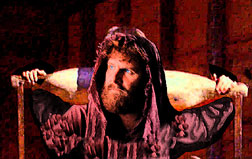 |
The Naked prophet's display
|
Isaiah 20:2 At the same time spake the LORD by Isaiah the son of Amoz, saying, Go and loose the sackcloth from off thy loins, and put off thy shoe from thy foot. And he did so, walking naked and barefoot. 3And the LORD said, Like as my servant Isaiah hath walked naked and barefoot three years for a sign and wonder upon Egypt and upon Ethiopia; 4So shall the king of Assyria lead away the Egyptians prisoners, and the Ethiopians captives, young and old, naked and barefoot, even with their buttocks uncovered, to the shame of Egypt. |
 |
To quote one of my former teachers, Gene Getz: "The theory and philosophy of visual education are rooted and grounded in the Word of God."
Visual Learning
The first stage of visual learning is differentiation (Couch, Caropreso & Miller, 1994). Differentiation is the critical or analytical component of decoding during which relevant information is identified or recognized and classified into categories. This information becomes the basis for the "intended message" or the literal message that eventually stimulates the schema.
 |
The second stage is interpretation. "Viewers cannot interpret a visual message unless they can extract the factual or realistic information, that is, the literal meaning of the visual. |
Interpretation involves synthesizing the analyzed factual or realistic information, connecting the new or unfamiliar information with existing knowledge, and then making inferences and judgments about the new and newly integrated information." (Couch, Caropreso, & Miller, 1994, p.279). Moreover, creativity is an important aspect of interpretation. It is creativity that helps enhance understanding the meaning of the visual (Couch, Caropreso, & Miller, 1994).
For knowledge acquisition purposes, visuals can be defined into 5 categories: (Braden, 1994, p. 195):
 |
* static visuals * dynamic visuals -video, animation, etc. * personal visuals * written (static) visuals * spoken (dynamic) verbal elements |
|
Telling stories through stained glass windows is one of the great traditions of western Christianity. By the 13th Century it had had become a high architectural art dedicated to the glorification and embodiment of God Ordinary people, most of whom were illiterate, were moved by the wonder of the biblical stories brought to them by refracted beams of sunlight in the darkened inner spaces of churches and cathedrals. |
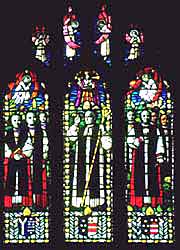 |
Artists for centuries have moved the message of scripture from oral to icaon, mosaic, stained glass, polychrome sculpture, painting and fresco and illuminated texts. Premodern art focussed on collaborative engagement of multiple parties to critique joint decision making.
Communicating God's Word to a post literate society has been a concern of the American Bible Society translators for some time. ABS uses the strategy of functional equivalency to transfer the meaning of a source text into a natural, close equivalent within the language of a target text. It will be interesting to see how such translation methodologies transfer into multimedia forms of communication in the digital age!
Print translations focus on the textual:
 |
And the contextual:
|
Beyond this the connotative and associative meanings which hermeneutics supplies are typically gathered into Footnotes, Maps, Graphs, Charts all comprise interpretive data which yield contexts for interpretation. |
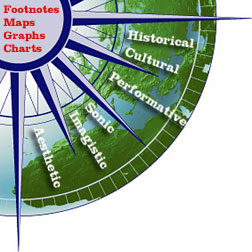 |
More to Come...
